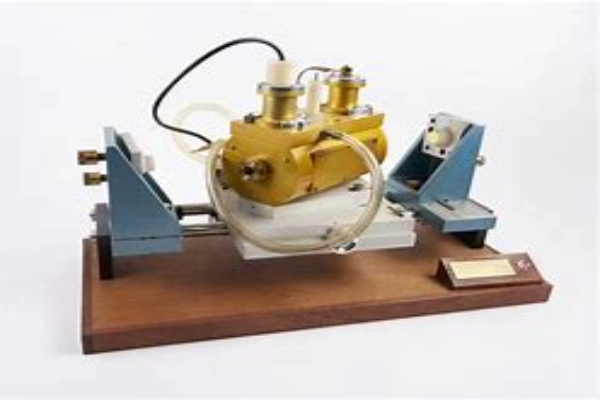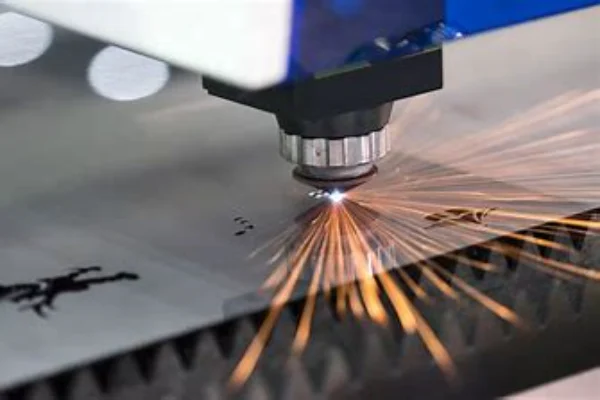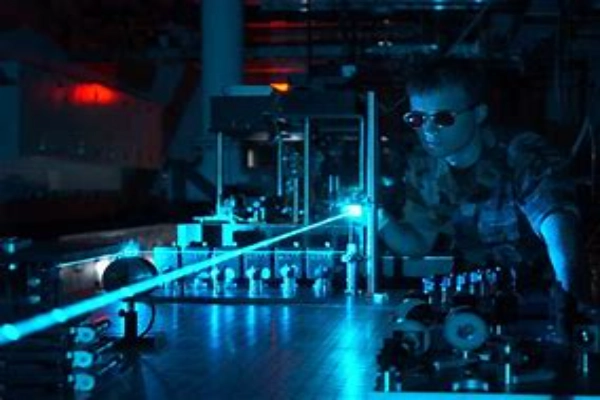Introduction
In today’s fast-paced technological landscape, the role of high repetition rate lasers has become paramount. The advancements in laser technology have opened up a plethora of opportunities, especially in sectors such as communication, medicine, material processing, and scientific research. Here, we’ll delve into these pivotal applications.

Communication: Revolutionizing Data Transfer Lasers
In today’s interconnected world, the need for swift and efficient data transfer has never been more vital. As the digital era witnesses an exponential growth in internet users, both in urban hubs and remote corners of the globe, the traditional means of communication seem to falter, unable to keep pace with the soaring demand. This has necessitated the emergence of innovative methods to facilitate rapid and lossless data exchanges.
Enter the realm of high repetition rate lasers, a technological marvel that stands at the forefront of revolutionizing global communication systems. These lasers, with their unparalleled ability to transmit data at incredibly high speeds, have become instrumental in transforming the very fabric of optical fiber communications. As a consequence, data transfer, which was once prone to delays and significant losses, has now become almost instantaneous and impeccably accurate. This ensures that whether it’s a high-definition video call between continents or the transfer of massive data files across oceans, the experience is seamless.
But the influence of high repetition rate lasers doesn’t stop at terrestrial communications. Their prowess extends beyond our planet, into the vast expanse of space. Satellite communication, which plays a pivotal role in global broadcasting, weather forecasting, and even navigation, demands the utmost precision and reliability. The inherent properties of these lasers, such as their efficiency and reliability, have made them an integral component of satellite communication systems. With their assistance, data exchanged between satellites and ground stations remains crystal-clear, devoid of noise or interference, and occurs in real-time. This ensures that whether it’s a distress signal from a ship in the middle of the Pacific or a broadcast of a global event, the communication remains uninterrupted and precise.
In essence, the introduction of high repetition rate lasers in the communication sector is not just an incremental improvement; it’s a paradigm shift. They are not merely enhancing the existing systems but are paving the way for a future where data transfer limitations are a thing of the past. As we move forward, it’s evident that these lasers will continue to play a pivotal role in bridging distances and bringing the world closer together.

Medicine: A Leap Towards Advanced Procedures
The medical arena has witnessed revolutionary changes over the decades, with technological advancements paving the way for procedures that are not only efficient but also patient-friendly. One such groundbreaking development is the advent of high repetition rate lasers, which have single-handedly transformed many facets of medical science.
In the realm of surgical procedures, traditional techniques, while proven, often came with a baggage of complications. Patients had to grapple with longer recovery times, risks associated with invasive methods, and sometimes post-operative issues. With the integration of high repetition rate lasers into surgical operations, a significant evolution has been observed. These lasers act with unparalleled precision, making surgeries less invasive and thereby reducing potential complications. The pinpoint accuracy ensures that only the targeted area is affected, leaving surrounding tissues untouched. Moreover, the duration of surgical procedures has been drastically reduced, leading to lesser anesthesia exposure and quicker recovery times. Patients no longer dread prolonged hospital stays, and surgeons can execute their tasks with heightened confidence.
Beyond surgeries, the diagnostic domain of medicine has also reaped immense benefits from these lasers. Diagnostics is all about timely and accurate detection, which can often make the difference between early intervention and complicated treatments. High repetition rate lasers have significantly enhanced tools like optical coherence tomography. This technology, which relies on capturing high-resolution images of internal body structures, has been supercharged by these lasers. Clinicians can now obtain clearer images in real-time, allowing for the identification of anomalies and potential health threats at their earliest stages. This not only facilitates prompt treatment but also boosts the chances of successful patient outcomes.
In a nutshell, high repetition rate lasers are ushering in an era in medicine where procedures are less daunting, recovery times are shorter, and diagnostics are sharper. As these lasers become more integrated into various medical procedures, the boundaries of what’s possible in patient care continue to expand. The future of medicine, with the aid of these lasers, looks incredibly promising, heralding a new age of medical excellence.

Material Processing: Crafting with Precision
Material processing forms the backbone of several industries, providing the foundation upon which countless products and tools are built. With the ever-increasing demand for precision and efficiency, traditional methods have often fallen short. The introduction of high repetition rate lasers in this sector has catalyzed a transformation, resulting in optimized processes and superior end products.
In the world of industrial manufacturing, especially in sectors like aerospace and automotive, the margin for error is minuscule. Any deviation, however slight, can lead to product failures or even catastrophic outcomes. Laser cutting and welding have always been favored for their precision, but the integration of high repetition rate lasers has elevated these processes to new heights. These lasers offer unparalleled accuracy, ensuring that every cut and weld is executed flawlessly. This precision not only enhances the quality of the final product but also ensures optimal usage of materials, reducing wastage. For industries operating on tight budgets and stricter environmental norms, the importance of this efficiency cannot be overstated.
Moving to the micro-level, the world of microfabrication, particularly in the realm of semiconductor manufacturing, has been revolutionized. Semiconductors are the heartbeats of most modern electronic devices. Their performance is directly tied to the intricacy and precision of their design. High repetition rate lasers have proven invaluable here. These lasers, with their pinpoint accuracy, can etch out incredibly intricate designs, essential for the miniaturization of electronic components. As devices become smaller yet more powerful, the role of these lasers in ensuring their performance becomes even more critical. Every groove, every etch, every minute detail is crafted perfectly, leading to semiconductors that are not only efficient but also reliable.
To sum it up, high repetition rate lasers have become indispensable in the realm of material processing. From large-scale industrial manufacturing to the microscopic world of semiconductors, their influence is pervasive and transformative. As industries continue to evolve and the demand for precision and efficiency grows, these lasers will undoubtedly remain at the forefront, guiding material processing towards excellence.

Scientific Research: Pushing Boundaries
Scientific exploration thrives on innovation. Tools and techniques that can enhance the depth and breadth of research open new horizons, pushing the boundaries of our understanding. Among these tools, high repetition rate lasers have emerged as a transformative force, touching various facets of scientific study.
Consider the field of spectroscopy, where understanding the minutiae of molecular structures is paramount. Previously, while traditional methods provided a baseline understanding, they often fell short in offering the kind of granular detail desired by researchers. The incorporation of high repetition rate lasers has shifted this paradigm. These lasers bring a precision and depth to spectroscopy, enabling scientists to delve deeper into molecular structures than ever before. Such detailed insights pave the way for breakthroughs, from understanding complex biochemical processes to developing novel materials.
On a different scale, the world of particle acceleration, fundamental to several groundbreaking experiments in physics, has also seen the transformative touch of these lasers. Particle acceleration demands precise control and efficiency, especially when studying phenomena at quantum levels or exploring the fundamental forces of the universe. High repetition rate lasers provide this controlled environment, ensuring particles are accelerated efficiently, uniformly, and predictably. This precision translates to more accurate experimental results, allowing scientists to draw conclusions with greater confidence.
Transitioning to a broader perspective, the sphere of emerging applications for these lasers paints a picture of limitless potential. Continuous research and development efforts hint at a future where these lasers might play pivotal roles in areas we’re only beginning to explore. From creating immersive experiences in entertainment to developing advanced defense mechanisms and harnessing sustainable energy sources, the versatility of high repetition rate lasers suggests they will be at the heart of many transformative changes in the years to come.
In sum, as we gaze into the future of scientific research and its myriad applications, it’s clear that high repetition rate lasers will be integral companions in our journey, illuminating paths previously thought unreachable and shaping a future brimming with possibilities.

Conclusion
The multifaceted applications of high repetition rate lasers across diverse sectors underscore their significance in contemporary times. As they continue to redefine boundaries in communication, medicine, material processing, and scientific research, the importance of understanding and harnessing their capabilities only escalates.
FAQs
- How do high repetition rate lasers enhance optical fiber communications?
- They facilitate high-speed data transfer with minimal loss, ensuring efficient communication.
- What role do these lasers play in laser-assisted surgeries?
- They offer precision, reduce invasiveness, and minimize surgery duration, ensuring better patient outcomes.
- Why are these lasers pivotal in material processing?
- They ensure accurate laser cutting and welding, essential in industries like aerospace and automotive, and precision in microfabrication processes.
- How have scientific research methodologies been transformed by these lasers?
- Techniques like spectroscopy and particle acceleration have seen advancements, ensuring detailed insights and controlled experiments.
- Are there any potential future applications of high repetition rate lasers?
- Yes, their potential applications in entertainment, defense, and energy sectors are being researched and seem promising.

Frank
Frank graduated from the University of Shanghai for Science and Technology, majoring in optics. As a technical engineer at Crylink Company, he deeply understands crystal materials and laser components.
Related Video(s) with this Article
Related Product(s) with this Article
Related Application(s) with this Article
